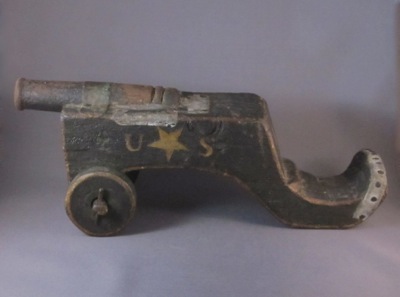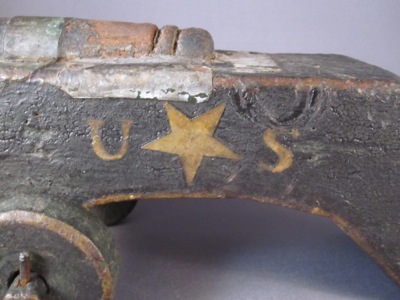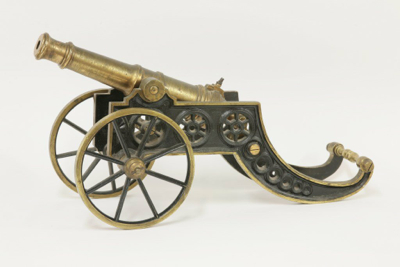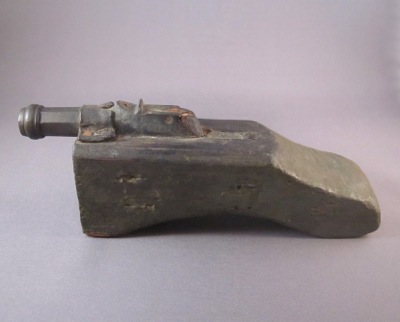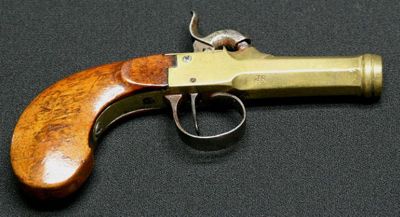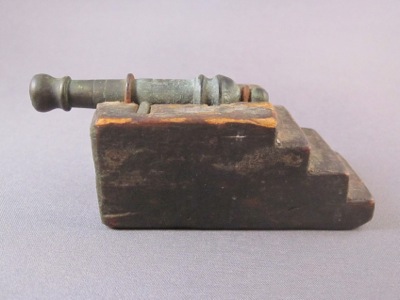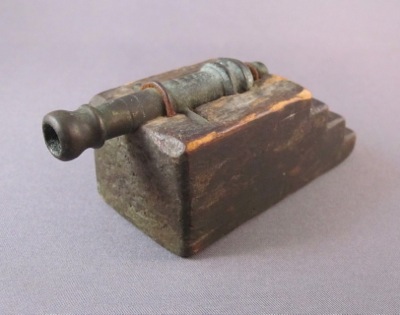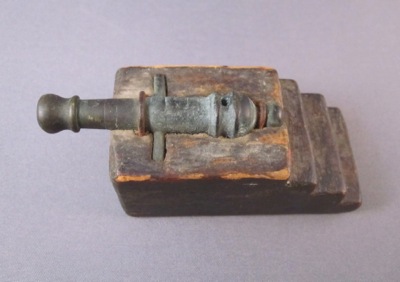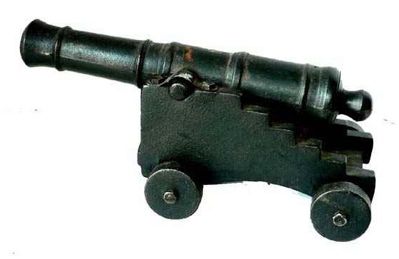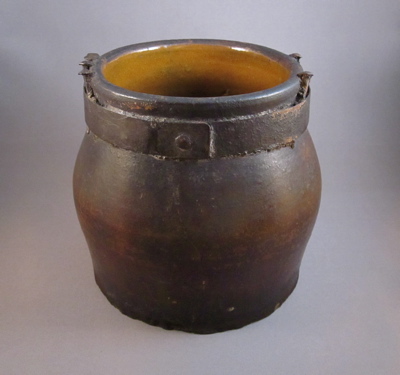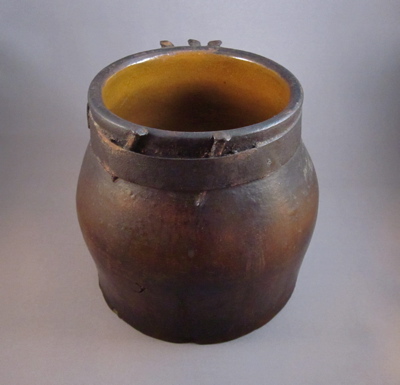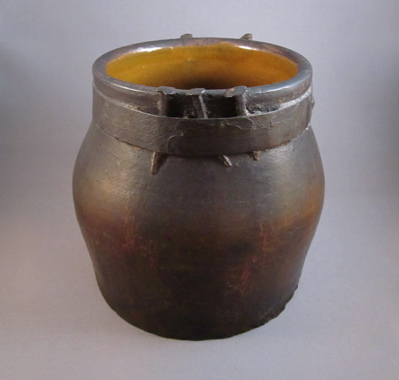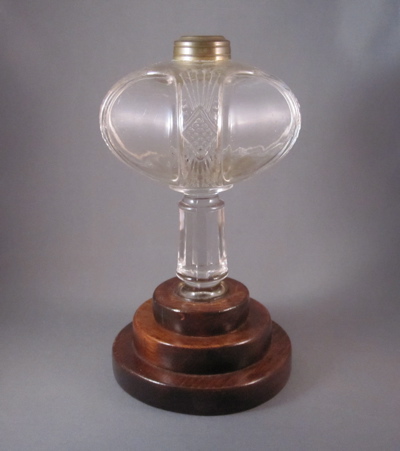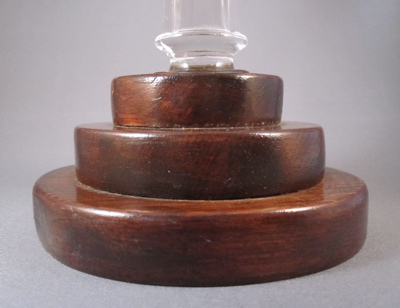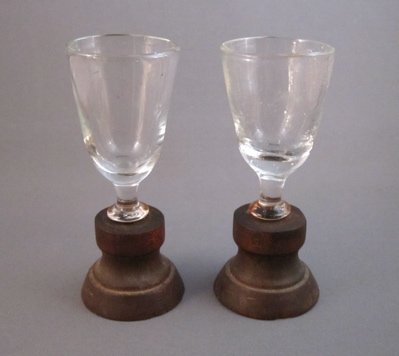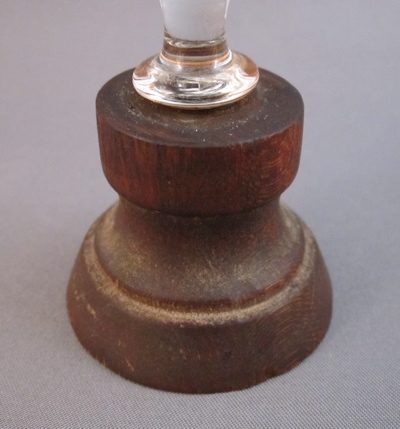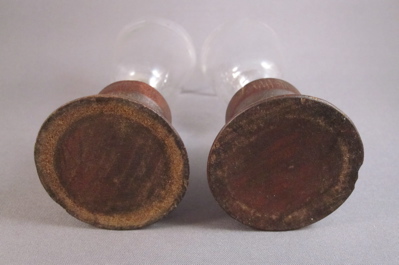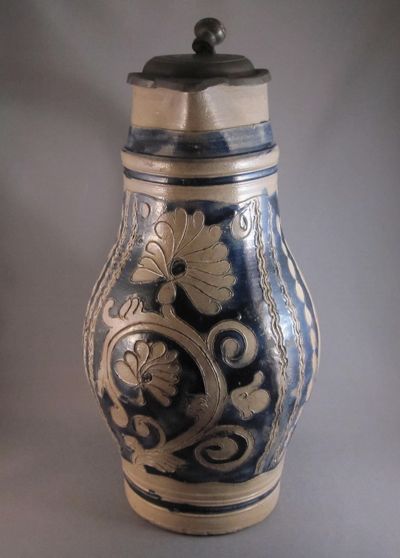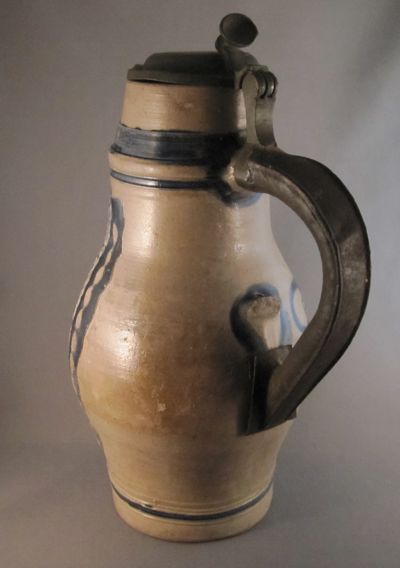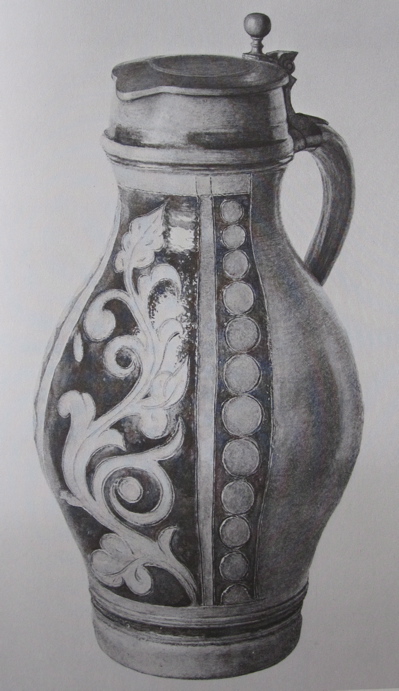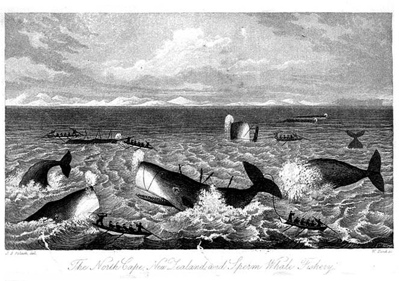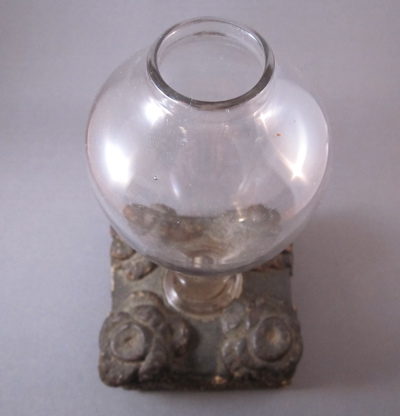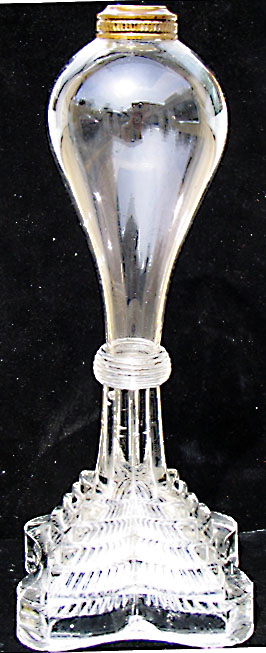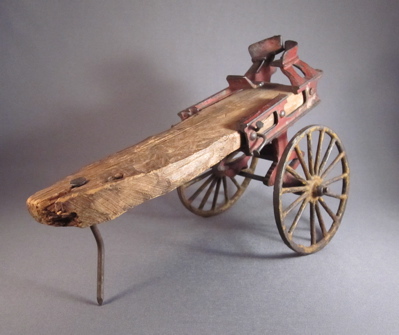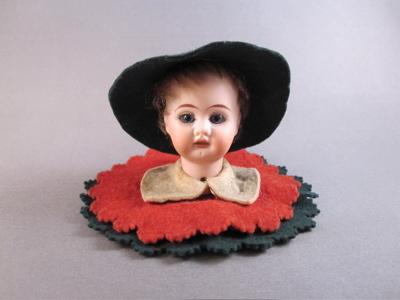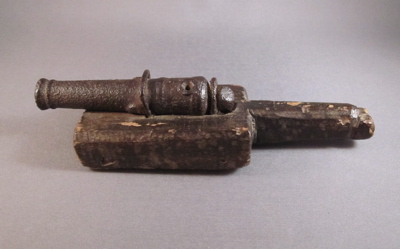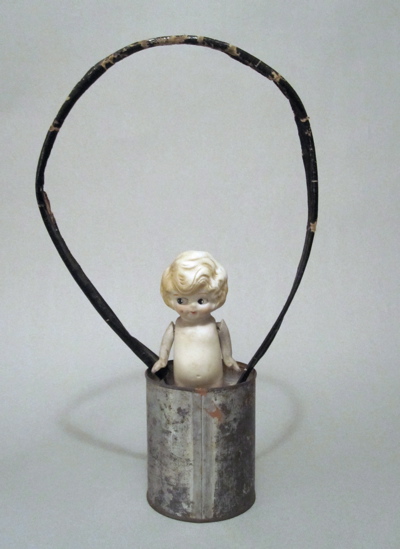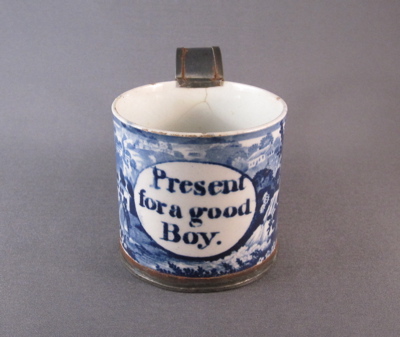This is the last and largest of the three cannons I purchased as a lot last November. It measures 12-1/4″ long, 4-3/4″ tall and I believe it was made in America in the late 1800s. When a young boy played a bit too rough and broke the toy cannon one Fourth of July in the early 1900s, I imagine his handy dad or grandfather carved a wood base to replace the broken cast iron original, adding embellishments such as paper stars and the letters “U S” to its sides. The barrel, with remains of the original black surface, sits on a metal plate and is fastened to the wood trolley using metal straps. The carved wood wheels are connected to a wood axel with metal pins and a strip of tin edging is attached to the back tail using numerous nail heads. I love the original dark green painted surface with gold trim and alligator finish, consistent on all three of the cannons, suggesting that they were repaired by the same person or at least in the same household. Please take a look at these other two posts, including a small and a medium-sized cannon, which make up the remainder of this terrific trio.
This intact bronze cannon with fanciful trolly shows where the inspiration came from for the carved wood base on mine.
Photo courtesy of Live Auctioneers


